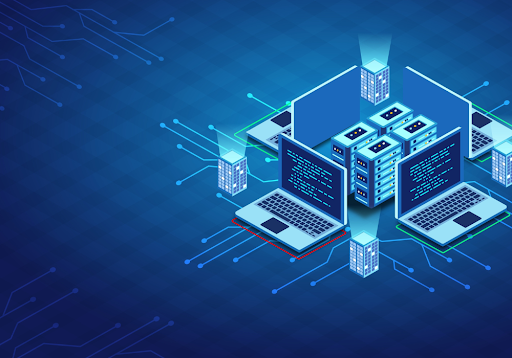The world of connected technology has undergone a significant transformation in the last decade. Smart devices—from home assistants and wearable tech to industrial sensors and autonomous vehicles—are no longer isolated entities performing standalone functions. Today, these devices form highly responsive, intelligent, and efficient networks that interact seamlessly with each other, systems, and users in real-time.
But what has fueled this evolution? How exactly have smart devices become more efficient in their communication? This blog explores the core advancements in communication protocols, infrastructure, intelligence integration, and custom development services that power the current era of smart device efficiency.
The Evolution of Smart Device Communication
Smart devices initially operated in silos—devices could connect to the internet but rarely interacted with one another. Communication protocols were basic, data processing was centralized, and latency was high. This model posed challenges in scenarios requiring real-time responsiveness and decision-making.
Modern advancements have transformed this landscape. Devices now interact in real-time, communicate with edge and cloud systems simultaneously, and participate in distributed intelligence networks. The outcome? Smarter, faster, and more resilient device communication ecosystems.
Key Drivers Behind Efficient Communication in Smart Devices
1. Advanced Wireless Protocols
Smart devices now rely on a sophisticated mix of communication protocols that support efficient, low-latency data transfer:
- Wi-Fi 6 and 6E enable faster data throughput and better performance in congested areas.
- Bluetooth Low Energy (BLE) allows devices to communicate with minimal power consumption.
- Zigbee and Z-Wave support mesh networking for connected home systems.
- 5G offers ultra-low latency and higher bandwidth, essential for smart cities and autonomous vehicles.
These protocols ensure seamless, reliable communication across thousands of devices, even in dense networks.
2. Edge Computing Integration
Rather than sending all data to centralized cloud servers, edge computing allows processing to happen closer to the device. This dramatically reduces latency and bandwidth usage while enhancing decision-making speeds.
For instance, a smart traffic light system can process sensor data locally to manage congestion in real time—without waiting for a command from a distant server.
3. AI-Powered Device Intelligence
Artificial intelligence (AI) algorithms embedded within smart devices enable them to “understand” data, predict outcomes, and act autonomously. Natural language processing in voice assistants and computer vision in surveillance cameras are prime examples.
Incorporating AI directly into smart devices not only reduces the need for continuous cloud communication but also increases the speed and relevance of device responses.
Interoperability: Breaking the Language Barrier Between Devices
1. Standardization of Protocols
One of the most significant challenges in the smart device ecosystem was the lack of standardization. Devices from different manufacturers often couldn’t communicate effectively. Today, organizations like the Connectivity Standards Alliance are leading efforts to create universal protocols, such as Matter, which promises secure and consistent communication between devices regardless of brand.
2. Middleware and Integration APIs
Middleware platforms now allow different smart systems to communicate by translating between protocols. Integration APIs are helping bridge communication gaps between IoT devices, cloud services, and enterprise applications.
For businesses developing virtual assistants, middleware acts as a crucial layer, especially when engaging with a custom chatbot development service that ensures cross-platform compatibility and real-time conversational context.
Real-Time Communication and Low Latency: The 5G Advantage
1. 5G: The Foundation of Real-Time Networks
One of the most influential innovations in smart device communication is the rollout of 5G. With speeds up to 100x faster than 4G and latency as low as 1 millisecond, 5G is a game-changer.
Applications like real-time patient monitoring, autonomous delivery drones, and augmented reality glasses rely on 5G to ensure that decisions and actions are executed instantaneously.
2. Network Slicing and QoS Prioritization
5G also enables network slicing—a method to partition the same network for different use cases. This allows certain devices or services (like emergency responders or industrial controls) to receive prioritized, uninterrupted bandwidth.
This technology is essential for mission-critical applications where delays could have serious consequences.
Edge AI and Embedded Intelligence: Smart Decisions at the Source
1. The Role of TinyML
Tiny Machine Learning (TinyML) allows AI algorithms to run on ultra-low-power microcontrollers. These miniature brains enable devices like wearables and sensors to make intelligent decisions without relying on cloud processing.
A fitness tracker using TinyML can identify motion patterns, detect falls, or monitor heart rate variability autonomously—alerting users only when necessary.
2. Reduced Bandwidth Consumption
By processing data locally, smart devices no longer need to send all raw data to the cloud. This not only reduces costs and energy use but also enhances data privacy—a growing concern among users.
Edge AI allows for fast, localized decision-making while maintaining the option for cloud-level analytics and storage when necessary.
Role of IoT Platforms and Custom-Built Solutions
1. Centralized Management with IoT Platforms
Platforms such as AWS IoT Core, Google Cloud IoT, and Microsoft Azure IoT Hub provide centralized tools to manage device communication, software updates, and data analytics. These platforms offer real-time visibility and control across large-scale deployments.
2. Tailored Efficiency Through Custom Development
Off-the-shelf platforms have limitations when it comes to specific use cases or niche industries. That’s where Custom IoT development solutions shine. These services enable organizations to create unique architectures, protocols, and integration flows that directly align with their operational needs, whether it’s smart agriculture, smart energy, or industrial automation.
Customized solutions ensure the right data is transmitted at the right time, in the most efficient format, minimizing lag and redundancy across the network.
Security in Smart Device Communication
1. End-to-End Encryption
Efficient communication must also be secure. Today’s smart devices implement robust encryption methods such as TLS and DTLS to secure communication channels. This is especially important in sectors like healthcare and finance.
2. Identity Management and Device Authentication
Modern smart ecosystems use secure identity and access management (IAM) to ensure that only trusted devices and users can participate in the network. Certificates, biometric verification, and token-based systems protect against unauthorized access.
3. Over-the-Air (OTA) Security Updates
Continuous software updates play a critical role in closing vulnerabilities. OTA updates ensure devices remain secure without requiring manual intervention—allowing for scalable security management in large fleets of smart devices.
Use Cases Across Industries
1. Smart Homes
Voice assistants, smart thermostats, and security systems now communicate through mesh networks, automate responses, and adapt based on behavioral patterns.
2. Healthcare
Connected medical devices allow real-time monitoring and early detection of critical health events, improving outcomes in chronic and acute care settings.
3. Manufacturing
Industrial IoT devices enable predictive maintenance, autonomous robotics, and process optimization—all with low-latency and real-time data exchange.
4. Transportation
From vehicle-to-infrastructure (V2I) communication to autonomous fleet management, smart devices streamline logistics, safety, and traffic management.
5. Retail
Smart shelves, inventory sensors, and connected POS systems help retailers manage stock, personalize experiences, and streamline supply chains.
Challenges in Smart Device Communication (and the Road Ahead)
1. Scalability and Data Overload
As the number of connected devices multiplies, networks face challenges in managing increased data volume. Efficient data routing and compression techniques will become even more important.
2. Interoperability and Standardization
Despite progress, complete interoperability remains a challenge, especially in global markets where different standards still coexist.
3. Energy Efficiency
Battery-powered smart devices must balance performance and power consumption. Innovations like energy harvesting and ultra-low-power chipsets are promising solutions.
4. Regulatory and Privacy Concerns
With increased communication comes increased scrutiny. Regulatory frameworks around data sovereignty, cross-border data transfers, and user consent will shape the future of smart device networks.
Conclusion
Smart devices are no longer limited to isolated interactions or simple commands. Through advanced protocols, edge computing, AI, and custom development, these devices now function as intelligent communicators—capable of responding in real time, learning from data, and working in sync with countless others.
As technologies like 6G, quantum computing, and advanced AI continue to evolve, the future will bring even faster, smarter, and more secure communication channels. Whether in homes, hospitals, factories, or cities, the devices around us will keep getting better at understanding and responding—efficiently, intelligently, and autonomously.
FAQs
What technologies enable smart devices to communicate efficiently?
Smart devices use technologies like Wi-Fi 6, 5G, Bluetooth Low Energy (BLE), edge computing, and AI to ensure fast, low-latency, and secure communication.
What is the role of AI in smart device communication?
AI enables smart devices to interpret data, predict user behavior, and make decisions autonomously. This reduces dependency on the cloud and enhances responsiveness.
How does edge computing improve smart device efficiency?
Edge computing allows data processing to happen close to the device itself, reducing latency, saving bandwidth, and improving real-time response.
Can smart devices from different brands work together?
Yes, thanks to standardized protocols like Matter and integration middleware, smart devices from different brands can now communicate and work together more effectively.
Why is security important in smart device communication?
Smart devices handle sensitive data and operate in critical environments. Security measures like encryption, authentication, and OTA updates ensure privacy and protection from cyber threats.
What industries benefit the most from smart device communication?
Industries like healthcare, manufacturing, transportation, and retail benefit significantly, as efficient device communication enables automation, predictive analytics, and enhanced user experiences.


